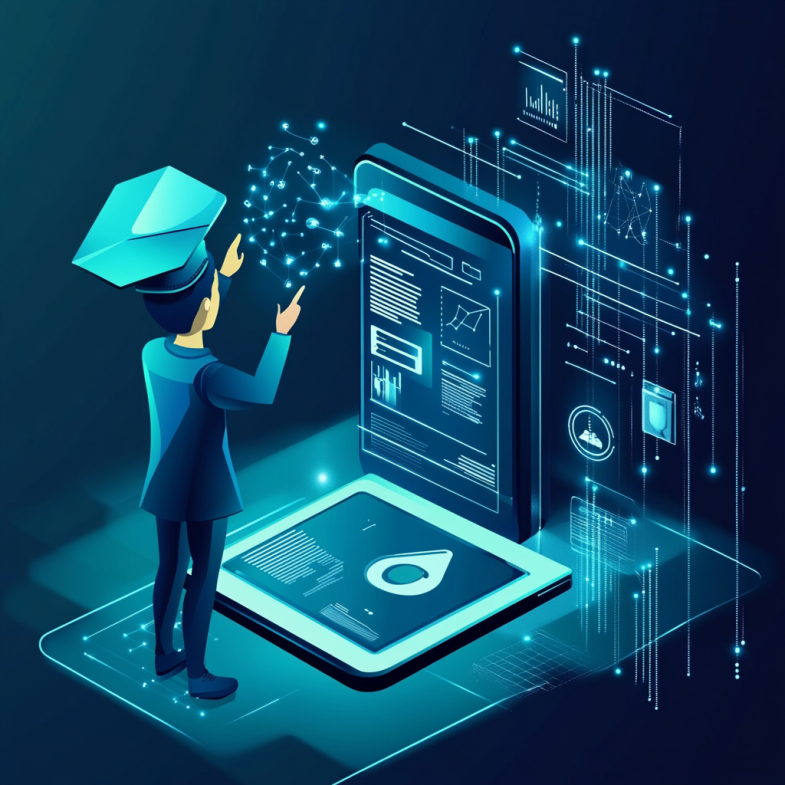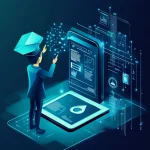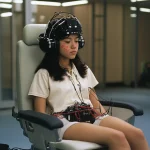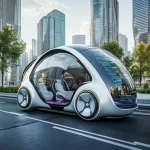Digitalization is rapidly changing the world, and education is no exception. Modern technologies open up new opportunities to improve the quality of learning, increase the availability of educational resources, and create more personalized learning programs. From online courses to interactive learning platforms, technological innovations are playing a key role in shaping the future of education. In this article, we will look at how digitalization is changing schools and universities, and what new tools and methods are becoming increasingly popular.
Chapter 1: Online Courses and Distance Learning
Advantages of Online Education
Online courses have become one of the most visible results of digitalization in education. They allow students to study at their own time and from anywhere, which is especially useful for those who work or have other commitments. In addition, online courses provide access to quality educational resources to people who live in remote areas or have limited access to traditional educational institutions.
Distance learning also allows educators to reach more students by providing them with the opportunity to use modern tools to create interactive and engaging learning materials. For example, platforms such as Coursera , edX and Udemy offer a wide range of courses from leading universities and companies, covering various disciplines and levels of difficulty.
Interactive Learning Materials
Interactive learning materials such as video lectures, quizzes, simulations and virtual labs make learning more engaging and effective. These materials allow students to actively participate in the learning process, test their knowledge and receive feedback in real time. For example, the Khan Academy platform offers free video lessons and practice assignments in math, science and other subjects that help students better understand the material and develop problem-solving skills.
Chapter 2: Personalized Learning
Adaptive Learning Systems
Personalized learning is becoming increasingly popular due to the development of adaptive systems that can analyze data on each student’s progress and offer them individualized learning plans. These systems use artificial intelligence (AI) algorithms to identify students’ strengths and weaknesses and automatically select appropriate materials and assignments. For example, the DreamBox platform provides adaptive math lessons for elementary school students, adjusting the level of difficulty and content based on their progress. Gamification
Gamification is the use of game elements in educational programs to increase student motivation and engagement. Game mechanics such as points, rewards, levels, and leaderboards help make learning more fun and stimulating. For example, the Duolingo platform uses gamification for language learning by asking users to earn points, complete levels, and compete with other students. This helps create a positive environment and maintains long-term learning engagement.
Chapter 3: Educational Technology in the Classroom
Interactive Whiteboards and Projectors
Interactive whiteboards and projectors are becoming increasingly common in school classrooms, replacing traditional blackboards and markers. These devices allow teachers to display course materials, give presentations, and interact with content in real time. For example, the SMART Board interactive whiteboard allows teachers to write, draw, and move objects on the screen, making the learning process more visual and interactive.
Learning Apps and Mobile Devices
Mobile devices such as smartphones and tablets are also finding their way into education. Specialized learning apps and programs allow students to study anytime, anywhere using modern technology. For example, the Quizlet app allows students to create and study flashcards with terms and concepts, as well as take quizzes and games to reinforce their knowledge. Mobile devices can also be used to conduct real-time polls and polls, which helps teachers get feedback from students and adjust the learning process.
Chapter 4: Virtual and Augmented Reality in Education
Virtual Reality (VR)
Virtual reality (VR) opens up new horizons for education by allowing students to immerse themselves in virtual worlds and interact with 3D models and simulations. For example, VR can be used to simulate historical events, travel to different countries and regions, as well as conduct laboratory experiments and research. The Google Expeditions platform offers virtual tours around the world, allowing students to explore landmarks and cultural sites without having to physically be on site.
Augmented Reality (AR)
Augmented Reality (AR) augments the real world with digital objects and information, allowing students to interact with learning material in a more interactive way. For example, AR apps can display 3D models of anatomical structures, chemical compounds, or architectural designs, allowing students to study and analyze these objects in detail. The Merge Cube app allows students to use a cube to create and explore a variety of virtual objects, such as planets, organs, and animals.
Chapter 5: The Future of Education Technology Integration of Artificial Intelligence
Artificial intelligence (AI) continues to play a major role in the development of educational technology. In the future, we can expect to see the continued development of adaptive learning systems that use AI to analyze large amounts of data and create more accurate and personalized learning plans. In addition, AI can be used to automatically grade homework, tests, and essays, allowing teachers to focus on more strategic tasks and improving the quality of learning.
Smart Campuses and Cities
Smart campuses and cities are becoming a new reality thanks to the development of the Internet of Things (IoT) and other technologies. Smart campuses are equipped with sensors and devices that collect data on student and teacher activity, allowing for the optimization of class scheduling, building management, and security. For example, an access control and video surveillance system can prevent unauthorized access to campus and ensure the safety of students and staff.
Digitalization is having a huge impact on education, providing new opportunities to improve the quality of learning, increase the availability of educational resources, and create more personalized curricula. Online courses, distance learning, interactive learning materials, adaptive systems, gamification, virtual and augmented reality — all these technologies play a key role in shaping the future of education. However, many technical, legal, and ethical issues need to be addressed to successfully implement these technologies. It is important to remember that the implementation of these technologies should be aimed at the benefit of society and take into account the interests of all its members.






